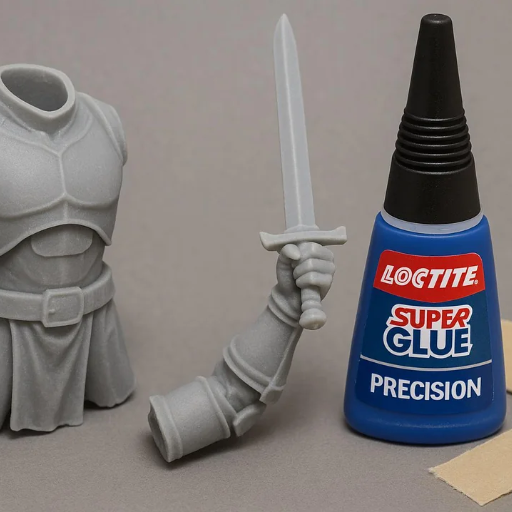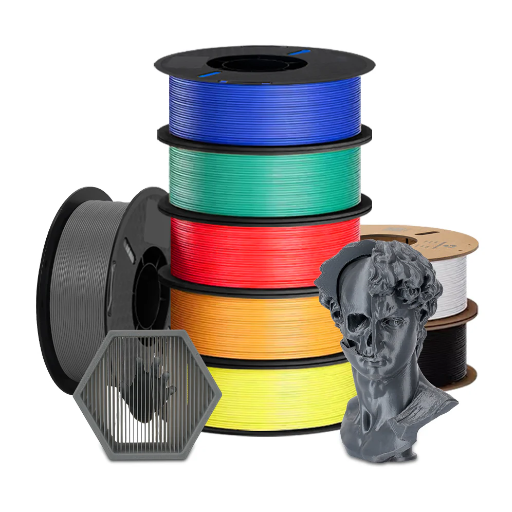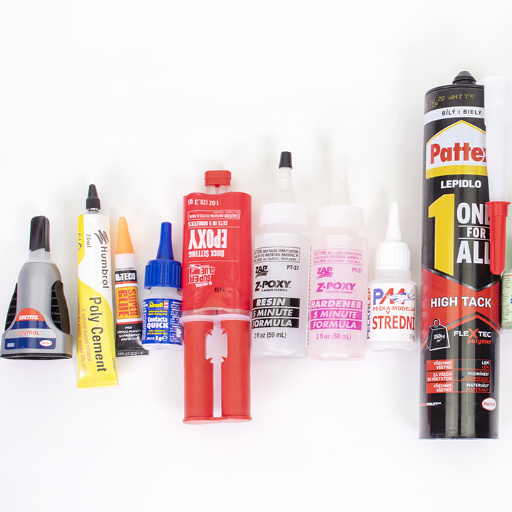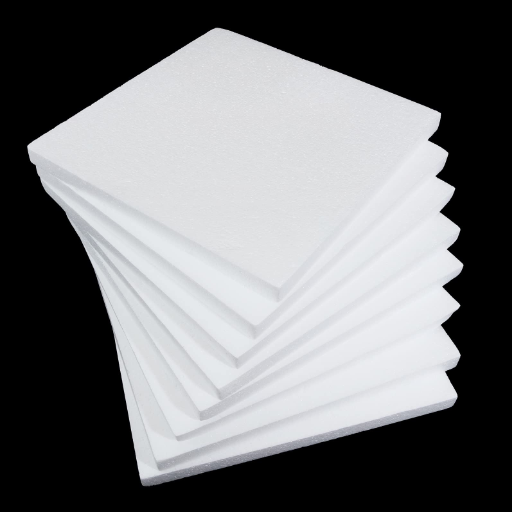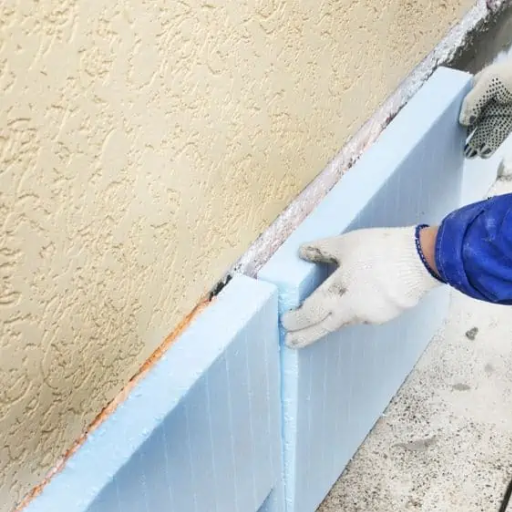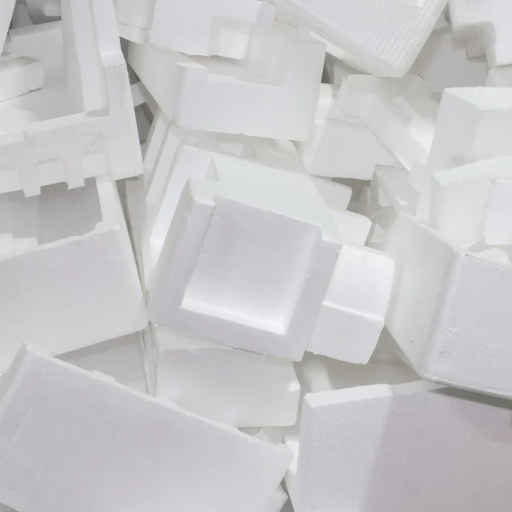Whether you’re a maker or an engineer, working on PLA 3D printed parts can give you problems when achieving strong, flawless bonds. This guide offers solutions on how to best glue PLA parts together. It discusses ways to prepare and apply materials to achieve maximum bonding strength. From selecting proper PLA gluing adhesives to surface treatment precautions, this article provides a comprehensive step-by-step approach. If followed properly, it provides advanced principles to ensure joints are dependable and strong while maintaining the integrity of the models. Hence their functionality and durability is enhanced.
What is the Best Glue for PLA?

Cyanoacrylate adhesives (super glue) stand out as the preferred option when looking for the best glue for PLA due to their strong adhesion and ease of application. These adhesives are known to cure and bond to PLA surfaces quickly without additional preparations. Epoxy resin is another good option as it an achieve a stronger bond, especially for large load-bearing parts. Moreover, epoxy resin is great for filling uneven surfaces. There are also PLA-specific adhesives or solvent-based bonding agents like dichloromethane that can fuse parts chemically for a seamless, strong bond. It ultimately depends on the application, geometry of the part, and level of bond strength needed.
Understanding PLA Adhesives
Choosing an adhesive for PLA (Polylactic Acid) calls for attention on its bond strength, cursing time and material property on PLA. Here are some important points based on the analysis of selected references.
- Cyanoacrylate (Super Glue): It is suitable for small PLA parts with low to intermediate loads due to its rapid curing and ease of application. Super glue is sufficient for rigid parts and most small PLA components, but not suitable for high mechanical stress situations.
- Epoxy Resin: Compared to cyanoacrylate, epoxy resin takes longer to cure, but its strength and gap-filling advantage makes it best for larger or irregularly shaped parts that need bonding. Develops a strong, rigid, and durable connection for tough application needs, so outperforming used in demanding applications.
- Adhesives or solvent-based chemicals such as dichloromethane that PLA bonds is classified as specific solvent-based agents that work by mildly melting the surfaces to be bonded. Especially ideal for application necessitating tight tolerances and highly sturdy bonds.
Taking into account requirements like environmental conditions, exposure to temperature and moisture is equally important for dependable and lasting bonds with PLA. The recommendations given by the manufacturers also need to be complied for optimal results.
Comparing Super Glue and Epoxy for PLA
Each adhesive has its pros and cons, comparing super glue (cyanoacrylate) and epoxy for PLA bonding shows this quite clearly. For low-end or small, simple projects that require little effort, super glue is ideal as it is a fast-setting adhesive. Super glue is easy to use and is great for light parts that need quick repairs. However, it is not effective in high-stress environments, high temperatures, or moved frequently, as it becomes weak over time.
When it comes to providing and withstanding extreme stress and durability, bonding PLA epoxy takes the lead. Having two parts, resin and hardener, epoxy is known for its strong, gap-filling bonds ideal for large or load-carrying parts. Epoxy is also good at resisting being damaged by moist environments and from high temperatures, which temporally makes it best suited for long-term critical projects. One negative epoxy has is that it sets slowly and needs to be mixed more accurately compared to super glue.
When it comes down to the choice of super glue and epoxy, it boils down to the expected load, exposure to outdoor conditions, the environment, and scope of the project with super being the ideal choice for quick repairs and epoxy suited for heavy-duty applications.
Exploring Acrylic and Solvent Options
Acrylic adhesives are multi-purpose and have strong adhesion capabilities to a variety of metals, plastics and composite materials. Acrylics, unlike other types of adhesives, cure fairly quickly and have properties of resistance to environmental factors such as UV radiation, temperature fluctuations, and humidity. Such features makes it ideal for use under harsh conditions and outdoors. Nonetheless, acrylic adhesives usually require thorough pre-surface treatment and emit unpleasant smell owing to the chemicals used in their formulation.
Solvent-based adhesives use the method of softening the surface of the substrate to be welded to form a strong permanent bond. These adhesives are widely used for PVC and other thermoplastic materials. They have relatively better resistance features towards heat and chemicals, but there is a concern with emission of Volatile Organic Compounds known as VOCs. Hence the working area must be well ventilated. Apart from that, sensitive materials to heat may face challenges as the application phase involves chemical processes which generate heat in the area.
In the decision making process, choosing between the two types of adhesives acrylic and solvent requires checking for compatibility of the materials, exposure to an environment, and project needs like bond strength, curing, time, and safety measures. Each of the options contain certain advantages and therefore provide benefits depending upon the project challenges.
How to Glue PLA Together Effectively?

An appropriate choice for an adhesive is crucial for properly gluing PLA as all adhesives do not work the same. Super glue works exceedingly well for smaller parts due to it’s fast curing time and strong bond. For larger parts, two-part epoxy adhesives are recommended as they have a stronger and more durable bond. Adherence is maximized when surfaces are clean of grease or debris so make sure to clean the surfaces before applying any glue. Sanding the bonding surfaces helps increase grip making it easier to join the parts. While curing, applying clamps or even some pressure helps maintain alignment and bond strength thus is applied throughout the curing period. Safety precautions must always be taken when using any glue so be sure to follow all instructions and safety guidelines set out by the glue manufacturer.
Step-by-Step Guide to Applying the Glue
- Prepare the Surfaces
Sanding of the surfaces has to be prior done first in order the ensure a stronger clean bond, so use a degreasive agent or isopropyl alcohol as is eliminates any grease, dirt, or oil that might be on the surface. The bonds surfaces can be lightly sanded using very fine sand paper to give it a rough look thus improving the texture.
- Select the Appropriate Adhesive
Be sure to always select adhesives that work best with the materials being joined. A two-part epoxy adhesive is highly recommended if the materials to be worked on are likely to be plastics, metals or ceramics. Make sure to read the label for instructions to check if it is compatible.
- Mix (if Required)
Give the resin and hardener a good mix please follow the manufacturer’s instructions if using two-part epoxy, sand it works best for them. For the best results the mixture must be blended evenly so that there aren’t any lumps.
- Apply the Adhesive
Carefully apply or spread as little as one thin coat to achieve one layer of glue on one of the prepared surfaces. Do not apply too much as thicker gobs of glue may ooze out when the surfaces are joined during the bonding process.
- Join the Materials
Mount the surfaces without delay and align them until they are in the correct position. At this stage, it is critical that you apply force, either by hand or using clamps, such that there is uniform contact all over the bond.
- Secure and Cure
Support the components with the aid of clamps, tape, or a heavy item, securing them in their desired position. The glue should remain for the recommended period; however, vibrations and movement should be avoided.
- Final Inspection
Lastly, with the aid of a suitable solvent wipe away any remaining glue and ensure the bond is in line with the specifications of the item in question, also check the bond for restrength and see if it meets the abrasive clean test.
Achieving these step with high level attention will achieve a bond that is dependable and unaffected by time.
Preparing PLA Surfaces for Adhesion
Achieving a strong adhesion bond on PLA often requires surface preparation techniques. PLA surface cleaning is essential, so dust, oils, and residue should be removed. The use of isopropyl alcohol (IPA) on a lint free cloth ensures there are no surface contaminants. Surface contour heterogeneity can be enhanced by 200-400 grit sanding which increases interlocking mechanical bond adhesion. Fine IPA purging must be performed to ensure there is no sanding debris contamination. If prescribed by the adhesive manufacturer, the use of PLA specific primers or adhesion promoters offers the best results. These techniques guarantee the optimal conditions for a bond that is strong and dependable.
Ensuring a Strong Glue Joint
For a strong glue joint, a few factors need to be taken into consideration. Use a bonding agent suitable for the materials to be joined, like cyanoacrylate for plastics such as PLA, or epoxy for more than one type of material. Listen to the instructions as given to follow the right mixing and curing times. Preparation of surfaces is as important; make sure to properly clean and sand the surfaces to increase adhesion. Employ clamps or weights to the joint area for proper pressure during curing. Do not apply stress on the joint till after the curing time stated by the glue’s specifications. For tested applications, check the bond strength on control materials for performance guarantee.
What are the Best Adhesives for PLA?

Cyanoacrylate (super glue), epoxy adhesives, and specialized PLA solvent adhesives are cited as the best for bonding PLA (Polylactic Acid). Cavanoacrylate is common for general use due to its fast curing time and a strong bond. Super glue is also readily available. Two part epoxy adhesives are best for high strength bonds. They are excellent at filling gaps, but take longer to cure. Solvent adhesives, such as dichloromethane or specialized PLA bonding agents, weaken the surface composition, allowing them to meld together without seams, and are perfect for precise or strong structural assemblies. As always, do consider the specifics of your project such as if it is load bearing, the environment it will be in and the finish required when choosing an adhesive for PLA.
Evaluating CA Glue and Activators
Cyanoacrylate adhesive, or more casually known as CA glue begins to set within moments and can adhere to numerous different surfaces including PLA. Adding an activator which speeds up the polymerization will enhances the CA glue’s bond which provides almost immediate adhesion. This is of utmost importance for intricate assemblies or when there is an immediate requirement of intermediate handling strength. But in the case of combusted application of activators, there commonly brittle bonds without whitish surfaces or whitened surfaces on PLA, which are critical over-bonds. When opting for the application of CA glue and activator, requirements like stress, temperature, the structural functionalities of the joint, along with precisive sensibility need to be factored. Preliminary testing using scrap material is highly recommended as it aids in the determining the optimal strategy for application as well as ensuring the required quality standards are met.
Benefits of Using Gorilla Glue and Loctite
Loctite and Gorilla Glue are prominent in the industry, recognized as leading adhesive brands, each providing unique benefits based on intended use. Gorilla Glue differentiates as it works on different surfaces including plastic, metal, ceramics, and wood. Its water resistance when cured makes it an ideal contributor for high moisture or outdoor settings to ensure reliable tougher bonds. Moreover, it can easily fill gaps due to expanding upon curving making it a go-to for uneven surfaces.
Loctite, in contrast, offers superb Super Glue and threadlocker variants that exhibit remarkable precision and strength. Loctite Super Glue is very rapid at forming bonds and is ideal for minor and delicate repairs because of its speed of curing and clear finish. Its threadlocker adhesives perform best on the prevention of the unintentional and damaging untightening of threaded fasteners caused by vibration in mechanical and automobile works. With both brands, their product lines showcase the extensive use cases for which dependable bonds are needed.
Case Study: 3D Printed Parts
Due to the particularistic assembly problems presented by additive manufacturing, the use of adhesives for 3D printed parts has increased substantially. In the context of 3D-printed assemblies, a combination of precise mechanical fitting and robust adhesive application guarantees lasting bonds and structural soundness. These adhesives are appropriate for these parts and they are Loctite adhesives which provide sufficient strength for the varying surface adhesion textures of PLA, ABS, and Nylon that are commonly used in 3D printing. For example, Loctite Super Glue is suited for delicate and detailed constructions because it bonds strongly and quickly to small parts, creating a clear and durable bond.
Threadlocker adhesives are equally valuable in scenarios where 3D printed parts involve mechanical assemblies. These products help in preventing unintentional disassembly throughout the period of usage due to shaking and vibration. Loctite products demonstrate high compatibility with 3D printed surfaces and their solutions for dealing with porosity and rough surfaces which are characteristic in parts made by additive manufacturing are helpful.
Can You Melt PLA Parts Together?

PLA parts can indeed be melted and then glued back together using the appropriate amount of heat. Tools like a soldering iron, heat gun or even a 3D printing pen can be used to melt the parts to join them at their points of contact. A uniform amount of heat should be applied as not to overdo it, as too much heat will cause the material being worked on to soften or lose its strength. Make sure that the two surfaces are clean so that they can be aligned well to each other before melting the surfaces for a better outcome.
Understanding Weld-On Techniques
Weld-on methodologies are used to mechanostereochemically join two or more parts of a thermoplastic through chemical or thermal bonding or fusing. Important factors include the type of adhesive or solvent used like acrylic or polycarbonate; also, outer surface steps where edges are cleans sorbed, smooth and mark alignment are critical to get a good bond. Willingness not to allow weak links is one of the covered uniform application. Allow curing time for strength to be at its maximum. The joint should be suffused with the adhesive to avoid any weak spots and the surrounding tissue to ensure sufficient time is given. Ambient factors should also be deeply watched. Regardless of the degree of humidity or temperature, these factors can improve or ruin the bond quality. For best results, follow materials guides or manufacturer’s recommendations. These practices will help establish protocols important for each material.
Using Acetone for PLA Welding
Though acetone is a popular solvent for ABS plastics, its use is hardly effective for PLA due to acetone’s PLA-resistant chemical structure. PLA cannot be welded with solvents due to its inherently soft structure, and surface-level application of acetone does not yield dependable, consistent results. If a stronger, more robust bond is desired, dedicated adhesives or epoxy, as well as implements that generate heat such as soldering irons, should be utilized for optimal PLA welding results. When employing solvents or heat, always ensure proper ventilation of the workspace and follow the material’s guidelines.
How to Ensure PLA Adhesives Last?

To enable the longevity of PLA adhesives, starting with correct surface treatment is key. Make sure that the cleaning of the bonding areas is thorough enough so that there is no dust, oil, or residue because it may dissolve the bond between the adhesive and the surface. Along with that, also use fine-grit sandpaper to increase the surface’s adhesion by roughening it up. Choose an appropriate adhesive for the PLA, for example cyanoacrylate, epoxy, or certain plastic adhesives. Spread the glue uniformly along the bonding surfaces and refrain from using the bonded object until the manufacturer-recommended curing time is reached. To prevent PLA from chaining shape, refrain from applying excessive structural load beyond its thermal tolerance and avoid moisture or UV light for prolonged periods, making sure that the bonded object is within claimed objectives integrated with the service temperature.
Tips for Dry and Curing Times
For ensuring maximum bonding effectiveness of various types of PLA approaches, having knowledge of the curing and set times associated with granular to adhesive interfaces will also be very valuable. While dry time is defined as the interval that a PLA adhesive surface needs to undergo light handling and setting, ranging somewhat between a few seconds all the way to a few hours based on the glue used, curing time relates to the span needed to financially achieve an unbreakable glue bond, which usually is from twenty-four hours up to seventy-two hours for most adhesives including epoxy and cyanoacrylate.
To achieve the best outcomes, follow the instructions provided by the adhesive manufacturer regarding temperature and humidity as these factors can greatly influence the curing time. Additionally, do not allow any movement or load on the bond during the curing phase. Some adhesives may allow for the use of controlled heat to accelerate curing, but in the case of PLA materials, this must be done carefully to avoid damaging the material.
Maintaining PLA Adhesion Over Time
Storing the printed parts in a cool and dry place will ensure that the PLA adhesion remains intact over long time periods. PLA performs best in stable temperature and humidity environments, hence these factors should be controlled. Moisture can weaken adhesion and lead to warping, which is another reason why a dry environment is ideal. Other processes such as annealing within the material can also enhance durability, reducing internal stress. PLA specific adhesives and primers will also increase adhesion throughout the PLA lifetime and during the printing process. To maintain structural endurance the object fatigue, layer separation, or any other signs of material degradation should be checked regularly.
References
Frequently Asked Questions (FAQ)
Q: Can I use superglue for all PLA 3D printed parts?
A: Yes, superglue works effectively on PLA pieces and is one of the best options for gluing 3D parts together.
Q: What do I need to prepare before gluing PLA pieces together?
A: Before gluing PLA pieces together, you should pre-fit your parts to ensure a proper alignment and use nitrile gloves to avoid skin contact with the superglue.
Q: Is there an alternative to superglue for gluing PLA?
A: Yes, alternatives such as Weld-On 16 and acrylic glue can be used for gluing 3D printed parts, but superglue remains one of the strongest options.
Q: How long does it take for superglue to set on PLA?
A: Superglue typically sets quickly, usually within seconds to a few minutes, but full strength may take up to 24 hours depending on the environment and the amount used.
Q: Can I use wood glue to bond PLA 3D printed parts?
A: While wood glue may work for certain applications, it is not recommended as the strongest way to glue PLA. Superglue or acrylic glue are better choices for achieving a strong bond.
Q: What should I do if my PLA pieces do not bond well?
A: If your PLA pieces do not bond well, ensure the surfaces are clean and free of dust. Additionally, consider using super glue gel for better control and a stronger bond.
Q: Do I need any special tools to apply superglue on PLA parts?
A: No special tools are required, but using super glue gel can help with precision application. A toothpick or similar tool can also assist in applying glue to small areas.
Q: Can large PLA parts be glued together using the same methods?
A: Yes, large PLA parts can be glued using superglue or other adhesives, but it’s essential to ensure proper alignment and sufficient glue coverage to hold the parts together securely.
















